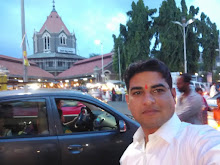Every region of India specializes in a craft or the other. Every corner here is a workshop of the craftsmen who have been engaged in making different forms of crafts since generations. The social structure of India has been such that it entrusted responsibility of harboring a craft form or the other to a particular cast for earning a living as well as developing it. This factor helped in the development many crafts. The craftsmen passed on the skills and knowledge of the crafts concerned to the next generation and they passed it on to the next generation. After so many generations passed by the present folks have almost similar skills and technique to those of their ancestors. Each generation has added something extra to what they had received. This process has helped in flourishing of the craft traditions.
There are several handicrafts that have become the identity of the state or the place they belong to. In present times their market value and demand have leaped to very high level. They are immensely appreciated both in home and away from home. These crafts have been survived till date because of their utilitarian value, availability to the common people and popularity in the domestic and foreign circuits.
The craft of jewelry has reached to high levels of popularity amongst Indians. Gems and the related jewelry are hugely demanded all over. The demand and popularity of jewelry has helped in the transformation of this craft into an industry. Gems and jewelry have different medicinal powers too. People wear them as per the advice of astrologers. Beside medical effects, it is strongly believed that selective gems bring fortune and success to the wearer.
Sarees are important attire for Indian women. They are plenty of materials and designs in which these Sarees are made. Brocade and zari work is in great demand. The repertoire of Indian sarees include Tanchoi from Surat, Paithani, Patola, Kanjeevaram, Banarsi Amru , cotton saris from the tribal regions of Bihar and Madhya Pradesh and many others from different corners of India. The sarees may be block printed, bandhej styled, embroidered, brocaded or traditionally done.
There are other varieties of costumes and garments that are manufactured in India using different skills, techniques and fabrics. Woven shawls of Kashmir and North-East, Jaipuri quilts, carpets and pherans of Kashmir are popular all over the places.
Other crafts like Bamboo products of Assam and Arunachal Pradesh, appliqué products of Orissa, Stone craft of Uttar Pradesh and Rajasthan and Bidri craft of Karnataka are most glorious crafts traditions in India.
For information on Indian Crafts visit http://india-crafts.com





